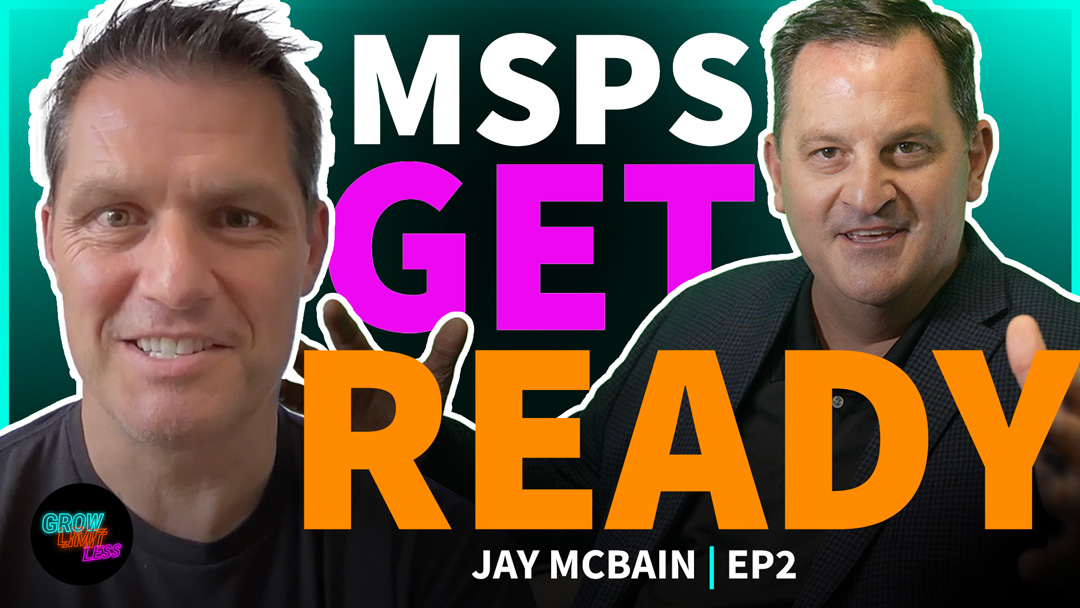Effective sales techniques are the backbone of every successful salesperson’s strategy. If you’re searching for actionable steps to improve your approach and close more deals, this article lays out clear, concise and enduring methods to help you achieve just that. Expect insights into refining your initial meetings, constructing persuasive proposals and cementing deals with confidence.
Key Takeaways
- An optimized sales process, excellent communication and a customer-centric approach are crucial for sales success, allowing sales professionals to excel from the first meeting to the confident closing.
- Building and managing a healthy sales pipeline is vital, focusing on lead quality and engagement, and leveraging CRM systems for accurate and organized sales data to maintain steady lead flow.
- Sales and marketing alignment, with cohesive messaging and collaborative campaigns, as well as continuous learning for adaptability and skill evolution, are key to staying competitive and achieving long-term success.
Mastering the Sales Process: Key Techniques for Success
At the heart of every thriving sales team lies a well-oiled sales process. Strong communication is the lifeblood of this process, where each interaction can make a real difference. Creative problem-solving skills are your key to standing out, helping clients navigate a crowded marketplace and discover the unique value you offer. And throughout it all, the guiding principle for every salesperson should be a focus on customer success.
One of Marketopia’s comprehensive online training courses, “Marketopia Certified Sales Professional Course,” dives deep into how to transform your sales reps into closing machines with cutting-edge sales techniques. Let’s dive into the art of the initial meeting, the craft of persuasive proposals, and the finesse of confidently closing deals.
First Impressions Count: The Art of the Initial Meeting
When you step into that first meeting, the spotlight is on you to set the stage for a potentially lucrative sales relationship. The first encounter with a prospect is more than an exchange of pleasantries; it’s the fertile ground where trust and rapport take root. Conveying genuine interest in clients’ needs and showcasing your prowess with the solutions at hand builds the trust that is the cornerstone of any successful engagement.
And remember, professionalism and punctuality are not old-fashioned virtues but the currency that buys you credibility and relatability, making you the salesperson everyone wants to work with. At this critical turning point, having patience can make all the difference. By taking a collaborative approach, you’ll build strong relationships that pave the way for success.
Crafting Persuasive Proposals: Tips and Strategies
From the warmth of the initial handshake to the cool logic of a persuasive proposal, the transition must be seamless. A proposal is not just a document; it’s a tailored narrative that positions your solution as the hero in the client’s story. Personalization is the key here, as it influences two-thirds of buyers, making them feel seen and understood.
Focus on the prospect’s needs, articulate the problem statement clearly and let the product features support the narrative rather than dominate it. And don’t skimp on the executive summary; it’s your elevator pitch on paper, capturing busy prospects’ attention and swiftly communicating the value of your solution.
Closing with Confidence: Securing Commitment
The final act of the sales cycle should be a natural progression, not a high-pressure standoff. Understanding the average sales cycle can help in employing diverse techniques like the assumptive close or the summary close, which cater to different scenarios and prospect mentalities. In an assumptive close, you confidently move the customer towards the next step, assuming they’re ready to buy. A summary close reminds the customer of the product’s benefits and then asks for the sale. But the real game-changer is simplifying the purchasing process. Provide a crystal-clear call to action and remove any friction that might make the customer hesitate.
Whether it’s through convenient e-signature options or hassle-free follow-up scheduling, making it easy for the prospect to say ‘yes’ is your ultimate goal. After the verification successful waiting period, they can proceed with confidence.
Building a Robust Sales Pipeline: Techniques for Consistent Lead Flow
A robust sales pipeline is the backbone of any thriving sales operation. It’s not about the number of leads but the quality of prospects that flow through it. Diversifying lead generation strategies with tools like content marketing, social media and networking events keeps the pipeline vibrant and flowing. But the true measure of a pipeline’s health is found in its:
- Size
- Balance
- Velocity
- Growth rates
Keeping these metrics in check ensures that you have enough prospects to meet targets and that your sales progress isn’t just a flash in the pan.
And let’s not forget the cleanliness of your pipeline, which hinges on accurate, organized sales data, often managed best through a CRM system.
Identifying Ideal Prospects: A Targeted Approach
Identifying the ideal prospects isn’t random; it’s a targeted approach that calls for specific criteria or methodologies like BANT, which stands for Budget, Authority, Need and Time Frame. These time-tested strategies create a standardized process, enabling you to evaluate the potential of leads with precision.
When you focus on the essentials, you’re not just chasing leads; you’re curating future success stories.
Engagement Tactics: Nurturing Leads Effectively
Once identified, leads are to be nurtured like delicate seedlings in a garden. Regular contact through emails, phone calls and even direct mail keeps the relationship budding and your brand at the forefront of their minds. Tailored content that grabs attention and resonates with leads helps deepen the connection.
When you automate this process, you ensure that the content they receive is not just relevant, but perfectly timed. Remember, active social media campaigns and insightful content marketing are your tools for ongoing engagement and establishing your brand’s authority.
Enhancing Customer Success: Long-Term Relationship Management
True customer success is not a one-off event; it’s a long-term commitment. Building a strong relationship with business clients lays a foundation of trust that can lead to re-engagement and referrals. It’s an investment that pays dividends in time and money saved.
Achieving this means going beyond the sale. It means:
- Sharing professional opinions
- Being transparent
- Understanding the client’s goals at every level
- Maintaining consistent communication
- Delivering results that not only meet but exceed expectations
Delivering Exceptional Service: Beyond the Sale
Exceptional service is the golden rule of customer success. Personalized service sets your brand apart and fosters loyalty, encouraging customers to return time and again. Be the brand that listens, that surprises with an unexpected gift, that treats customers as individuals, not just another sale.
Consistent and efficient communication is your lifeline here, ensuring that clients feel valued and understood throughout the project.
Strategic Account Growth: Expanding Business Opportunities
Expanding business opportunities requires:
- Deep knowledge of your product offerings
- A keen understanding of customer needs
- Identifying upsell and cross-sell opportunities that align with the client’s business goals
- Incentivizing customers with rewards such as loyalty programs
- Building trust and avoiding high-pressure sales tactics
By following these steps, you can cultivate a lush forest of business opportunities from a single seedling.
Leveraging Marketing Synergy: Aligning Sales and Marketing Efforts
When sales and marketing move in lockstep, business performance soars. This alignment is not just desirable but essential for achieving increased ROI and better sales productivity. By identifying the ideal target audience together and crafting precise customer personas, campaigns become more effective and the brand experience more cohesive.
Unified Messaging: Creating a Cohesive Brand Voice
A cohesive brand voice is the symphony that plays consistently across all your channels. It reflects the company’s values, personality and goals in every message, every campaign, every interaction. Maintaining this requires a ‘brand sheriff’ to enforce standards and ensure that your content resonates with the audience it’s intended for.
Personal touches like stories and relatable design elements can make your brand not just seen but loved.
Collaborative Campaigns: Joint Initiatives for Greater Impact
The most impactful campaigns are born from collaboration. When sales and marketing teams work together, sharing goals and insights, the result is a campaign that hits the mark with precision.
Personalized campaigns that spring from a unified brand identity resonate deeply with customers, driving engagement and conversion rates.
Sharpening Sales Skills: Continuous Learning and Adaptation
The landscape of sales is ever-changing, and to thrive, you need to sharpen your skills continuously. Sales training is not an event but a journey, ensuring that sales techniques stay effective and relevant.
Adopting a positive mindset and visualizing success is crucial, as is ongoing investment in sales training, which enhances both individual and team performance.
Sales Training Programs: Investing in Your Team’s Growth
Investing in sales training programs is investing in the future. It’s about enhancing individual sales reps’ performance and fostering a team that approaches the market with a unified strategy.
A culture of innovation, where team members are encouraged to learn and adapt, keeps a sales team competitive and successful.
Adapting to Market Changes: Staying Ahead of the Curve
In a world where change is the only constant, staying ahead of the curve is not just smart; it’s survival. Adapting to market changes requires a keen eye on dynamics and competitor activities, and the agility to pivot strategies quickly.
Encouraging adaptability within the sales team allows them to respond proactively to new opportunities and challenges, ensuring long-term success.
Measuring Success: Utilizing Sales Performance Metrics
Measuring success in sales goes beyond gut feelings; it’s about concrete, trackable goals that are informed by sales performance metrics. These metrics illuminate the path to improvement, highlighting areas of excellence and those in need of attention.
With tools like sales tracking platforms, revenue forecasting and sales strategy effectiveness become clear, guiding resource allocation for maximum impact.
Key Metrics to Monitor: From Lead Conversion to Customer Retention
Key metrics are the navigational stars for sales teams. Monitoring the following KPIs provides a snapshot of performance and areas for strategic adjustment:
- Sales cycle length
- Pipeline deal count
- Customer retention rates
- Total revenue
Regularly tracking these KPIs ensures that the team’s efforts are aligned with business objectives and customer expectations, driving continuous improvement.
Data-Driven Decisions: Making Informed Strategic Choices
In sales, data-driven decisions are the compass by which you navigate. Sales tracking software offers several benefits, including:
- Predicting future sales
- Informing strategic business decisions
- Allowing for performance forecasting
- Efficient resource allocation
- Understanding sales trends and customer behavior
- Optimizing strategies to foster revenue growth
By implementing agile methodologies, sales strategies can be adjusted in real-time, staying responsive to market conditions and customer needs.
Advanced Closing Techniques: From Theory to Practice
The path from theory to practice in advanced closing techniques is paved with experience and understanding of the client’s psychology. These techniques, such as the Summary Close or the Assumptive Close, are honed through real-life application and learning from each engagement.
But what truly sets apart the best salespeople, including sales managers, is their ability to recognize and influence the psychological triggers that drive decision-making.
Psychological Triggers: Influencing Decision Making
Understanding the psychological triggers that influence decision-making is akin to having a map of the treasure island. It guides salespeople to the X marks the spot where sales close.
Creating a sense of urgency with limited-time offers can play on the fear of missing out, motivating buyers to act quickly and decisively.
Negotiation Mastery: Winning Strategies for Tough Deals
Negotiation is where the rubber meets the road in sales. It’s half the battle in securing a successful deal. Negotiation mastery is not just about what you offer; it’s how you build value and engage with key decision-makers. It involves discussions that are focused on the benefits, addressing pain points, and sometimes knowing when to walk away for the best outcome.
Enhancing negotiation skills through training can significantly improve sales performance metrics like the Average Sales Price, making it a worthwhile investment for any sales team.
Summary
From mastering the sales process to building a robust pipeline, enhancing customer success, aligning marketing efforts and sharpening sales skills, the strategies outlined here are your roadmap to success. Remember that your ability to adapt, leverage data and employ advanced closing techniques will set you apart in a crowded marketplace. The techniques and strategies are practical tools that, when wielded with skill, can lead to unparalleled sales success.
If you’d like to get deeper, check out more of Marketopia’s expert-led, actionable courses — now available for a FREE 7-day trial! Check it out here.
Frequently Asked Questions
What is the best closing technique?
The best closing techniques in sales involve using visual content, showing empathy, highlighting the skill and time put into a product, discussing opportunity cost, selling ownership of your solution, emphasizing the timing and utilizing testimonials and case studies to showcase success.
What key factors contribute to successful sales engagements?
The key factors contributing to successful sales engagements are effective communication, creativity in problem-solving, a customer-focused approach and mastery of the sales process. Embrace these factors to boost your sales success!
How can sales proposals be made more persuasive?
To make your sales proposals more persuasive, personalize them to the prospect’s needs, structure them clearly with visual elements and include a compelling executive summary that captures attention. This helps to make a strong impression and effectively convey your message.
[ninja_form id=5]







